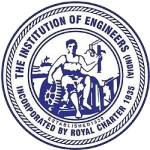Prediction of roof falls and induced caving in continuous miner panel using Machine Learning
Abstract
Continuous Miners are deployed in underground mining for extraction of coal by caving method. The safety conditions require regular caving in the goaf to release the stress in the roof. These falls depend upon various geo-mining and specific characteristics in the area under extraction. Prediction of roof cavability is conducted by emprerical calculations and also numerical modeling. The cavability is assesed by monitoring of convergence in the front abutment zone. A threshold limit of 5mm convergence is considered for cavabilty in the goaf. In some cases, the roof fall does not occur beyond the threshold limit and requires induced caving of the roof in the goaf. In this paper 336 data sets of roof falls in five continuous miner panels were analyzed by logistic regression and machine learning algorithms, to predict the need for induced caving or not. The comparison of the field data in 336 sets, with the logistic regression was found to be about 74%. The variation is because of the varying depths and dimensions of the five panels in the mine under study. It is concluded that the logistic regression and machine learning algorithms of prediction is a useful tool for the decision of induced caving in a continuous miner panel based on the sufficient field data of 336 sets.
Downloads
References
. Arun Kumar Singh, Ashok Kumar, Dheeraj Kumar, Rajendra Singh, Sahendra Ram, Rakesh Kumar, and Amit Kumar Singh, (2021), “Field and Simulation Studies for Mechanized Depillaring below Incompetent Geological Formations of an Indian Coal Mine”, Journal of the Geological Society of India.
. Arun Kumar Singh, Rakesh Kumar, Sahendra Ram, Amit Kumar Singh, and Rajendra Singh, (2013), “Rock mechanics considerations during continuous miner based coal pillar extraction in Indian Coalfields”, Conference on National Workshop on Continuous Miner, DGMS, Dhanbad.
. Palei S.K. and Das S.K., (2009), “Logistic regression model for prediction of roof fall risk in Bord and Pillar workings in Coal mines: An Approach”, Safety Science.
. Laxmi Narayana, D. (2021), “Study & Prediction of Roof Falls in an Underground Depillaring Panel worked with Continuous Miner using Logistic Regression”, ME Thesis, under the Supervision of Dr. M.S.Venkataramayya, submitted to Osmania University.
. Saharan, M.R., Mitri, H.S., (2009), “Numerical Simulation for Rock Fracturing by Destress Blasting-As Applied to Hard Rock Mining Conditions”, VDM Verlag Dr. Müller, Germany. ISBN: 978-3-639-11064-7.
. Konicek, P., Saharan, M.R., Mitri, H. (2011), “Destress blasting in coal mining—state-of-the-art review”, In: Proceedings of the First International Symposium on Mine Safety Science and Engineering, part B, Beijing, 27–28 October. China Academy of Safety Science and Technology. Proceedia Engineering 2011, pp. 179–194.
. Roy, P.P., Sawmliana, Ch., Bhagat Narayan & Madhu, M. (2003), “Induced caving by blasting: Innovative experiments in blasting gallery panels of underground coal mines of India”, Transactions of The Institution of Mining and Metallurgy Section A-mining Technology - TRANS INST MIN METALL A-MIN T. 112. 57-63. 10.1179/0371745032 25011036.
. Roy, P.P., Swamliana, C., Singh, R.K., Singh, S.K., Kushwaha, A. (2009), “Scientific Study for Induced Caving by Blasting in the Continuous Miner Depillaring Panel at Jhanjra Colliery, ECL”, (Project No.: GC/MT/89/2008-09). Central Institute of Mining and Fuel Research, India.
. Das, S., Dey, A., Pal, A., Roy, N. (2015), “Applications of Artificial Intelligence in Machine Learning”, International Journal of Computer Applications, 115(9), 31-41. doi: 10.5120/20182-2402
. Abduljabbar, R., Dia, H., Liyanage, S., & Bagloee, S. (2019). “Applications of Artificial Intelligence in Transport: An Overview”, Sustainability, 11(1), 189. doi: 10.3390/su11010189
. Strecht, Pedro., Cruz., Luís, Soares, Carlos., Moreira, João., Abreu, Rui. (2015). “A Comparative Study of Classification and Regression Algorithms for Modelling Students' Academic Performance”,
https://www.researchgate.net/publication/278030689_A_Comparative_Study_of_Classification_and_Regression_Algorithms_for_Modelling_Students'_Academic_Performance, viewed: 10th June 2019
https://pdfs.semanticscholar.org/3305/2b1d2363aee3ad290612109dcea0aed2a89e.pdf, viewed : 10th June 2019
. Sathya, R & Abraham, A (2013) International Journal of Advanced Research in Artificial Intelligence, Vol.2, No. 2,2013, http://ijarai.thesai.org/Downloads/IJARAI/Volume2 No2/Paper_6-Comparison_of_Supervised_and_Unsupervie _Learning_Algorithms_for_Pattern_Classification.pdf, viewed: 10th June 2019.
. Mitchell, T. M. (1997), “Machine Learning”, New York: McGraw-Hill. ISBN: 978-0-07-042807-2
. Sebastian Raschka, Vahid Mirjalili, (2019), “Python Machine Learning-Third Edition, Machine Learning and Deep Learning with Python, scikit-learn, and TensorFlow2”.
Copyright (c) 2021 MUSUNURI VENKATARAMAYYA, D Laxmi Narayana

This work is licensed under a Creative Commons Attribution 4.0 International License.
I/We agree with the provision of the Bye-Law 118 of The Institution of Engineers (India) which states that copyright of each paper published in Institution Journal or Annual Technical Volume in full or in Abstract at its centres shall lie with the Institution.

